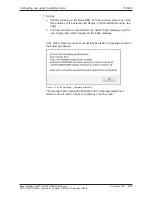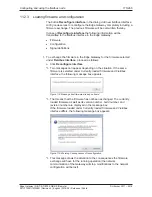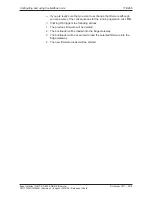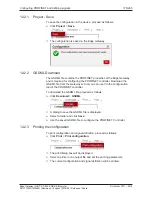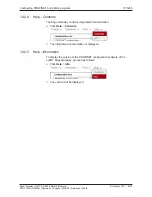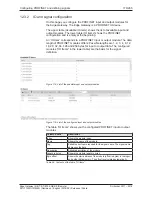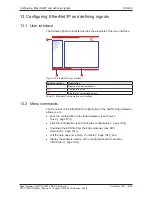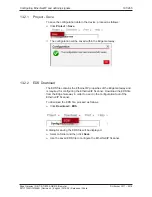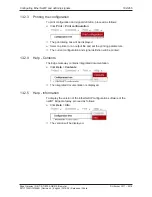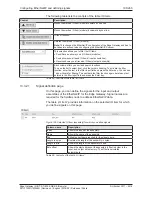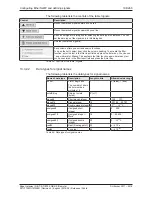
Configuring PROFINET and defining signals
183/263
12.3.2.2
Data types for signal names
The following table lists the data types for signal names.
Name of the data
type
Description
Bit length
Value range
Bit list
List of individual bits
The number of bits in
a list must be a
multiple of 8.
1
0 (false), 1 (true)
OctetString
Character sequence
8*(n+1)
Integer8
Short integer
8
-128 … 127
Integer16
Integer
16
-32768 … 32767
Integer32
Double integer
32
-2
31
… +2
31
-1
Unsigned8
Unsigned short
integer
8
0 … 255
Unsigned16
Unsigned integer /
Word
16
0 …65535
Unsigned32
Unsigned double
integer
32
0 … +2
32
-1
Float32
Floating point
32
≈ -/+ 10
38
Float64
Long Float
64
≈ -/+ 10
308
Table 59: Data types for signal names
12.3.2.3
Structure of the signal names
Signal names address the fieldbus data.
General structure of the signal names
Signal names have the following structure:
·
input~module_tag~signal_tag
·
output~module_tag~signal_tag
For a bit list the signal names have the following structure:
·
input~module_tag~bitlist_signal_tag
·
output~module_tag~bitlist_signal_tag
Parts of the signal name
1. The prefix
input
or
output
is produced automatically.
2. The tilde (~) separates the prefix and the module_tag.
3. You can enter the name for
module_tag
as described in section
Configuring I/O
[
}
page 184].
4. The tilde (~) separates the module_tag and the signal_tag or the
module_tag and the bitlist_signal_tag.
5. You can enter the name for
signal_tag
or
bitlist_signal_tag
as
described in section
Defining signals (procedure)
[
}
page 185].
Edge Gateway | NIOT-E-TIB100-GB-RE (Remote)
DOC170501UM04EN | Revision 4 | English | 2018-08 | Released | Public
© Hilscher 2017 – 2018




